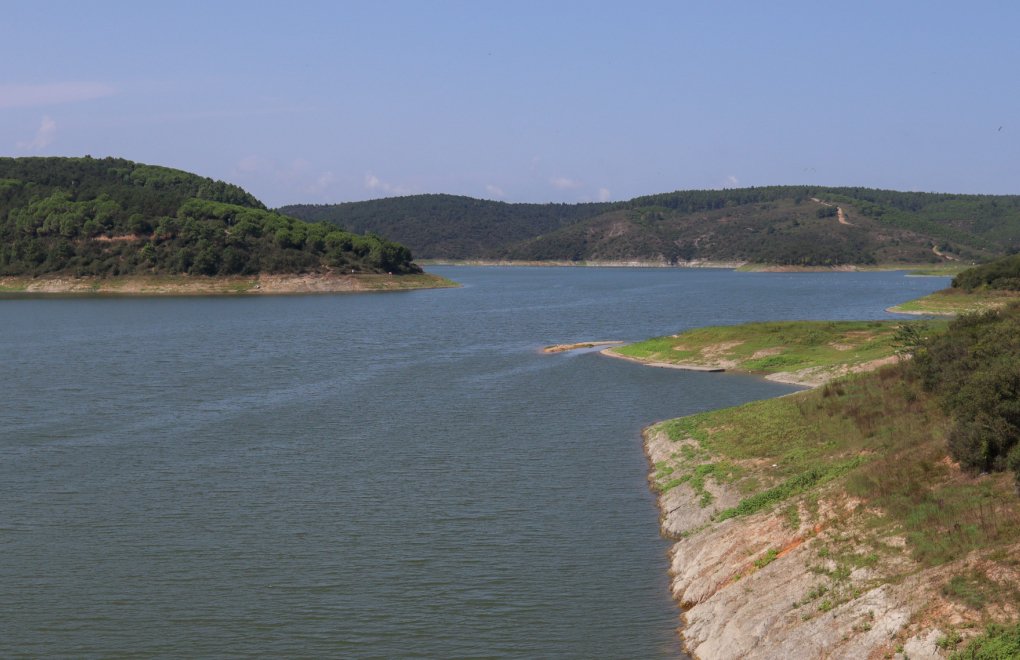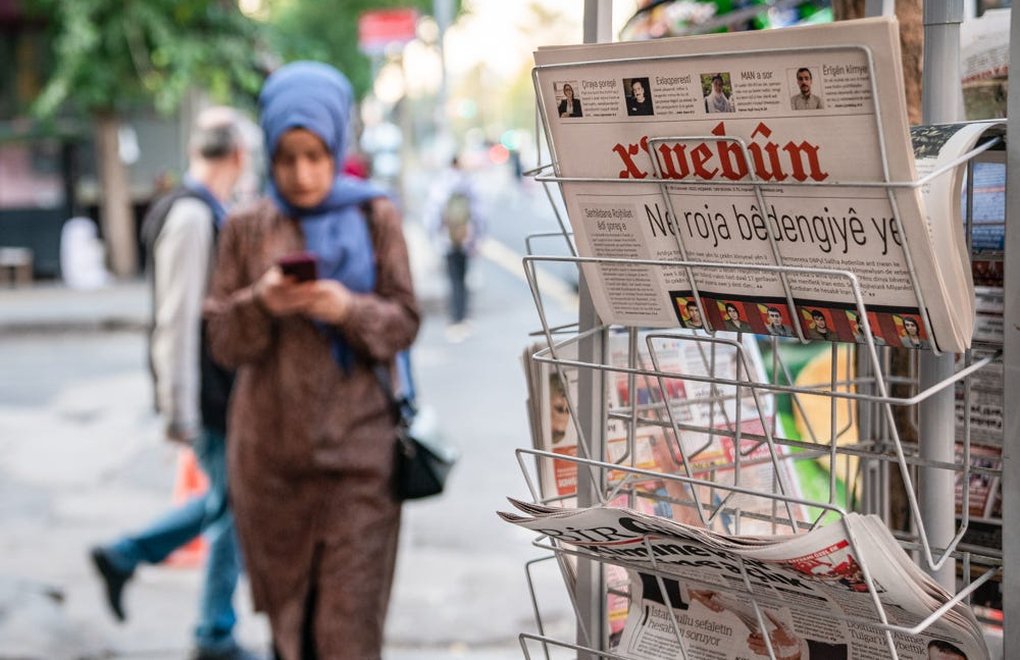The Alibeyköy reservoir is currently filled with 13 million cubic meters of water. (Photos: Ingrid Woudwijk)
In January 2021, İstanbul Mayor Ekrem İmamoğlu warned that the city and its 16 million residents could run out of water supplies within 45 days. When it began to rain a few days later, public discourse about water scarcity in Türkiye's largest city seemed to vanish.
While experts note İstanbul is not currently facing a water shortage, they often highlight the city's need for a more sustainable drinking water supply in the face of extended drought periods and extreme weather events made more frequent by climate change.
As intense heat waves rolled through much of Europe this summer, İstanbul and Türkiye, for the large part, were spared the drought conditions making headlines elsewhere in 2022. This, combined with relatively heavy precipitation last winter and spring, has left İstanbul's reservoirs with adequate water supplies for the time being.
Still, the reservoirs' current status is no guarantee for the city's future water supplies, according to Dr. Akgün İlhan, a water researcher at the İstanbul Policy Center. "We should not think that a water crisis is a problem of tomorrow. It is a problem of today," İlhan told Turkey recap.
Climate change, accelerating urbanization and a growing population are all reasons for concern over future water scarcity in İstanbul, İlhan said. "In short, not only droughts but also other extreme climate change-induced weather events reduce the availability of clean water in many cities," she wrote in a 2021 analysis of the issue.
Melen dam
Promising to provide İstanbul citizens with a stable water source until 2071, the Great Melen Project should have relieved concerns over the city's water supply, but to date it has been more of a source of problems.
Journalist Gökçen Tuncer details the saga in this extensive piece on Independent Türkçe. She notes the decision to start the "Great İstanbul Drinking Water Project" was taken on Aug. 15, 1990, when the population of İstanbul was 7.3 million. Twenty-two years and 9 million additional people later, the project remains unfinished.
The plan involves damming the Melen river in the Anatolian province of Düzce, collecting water in a large basin and transporting it roughly 200 km to İstanbul. Additional pumping stations, treatment facilities and pipelines are included in the waterworks. Once finished, the planned capacity of the project is to provide 1.77 billion cubic meters of water every year.
To compare, İstanbul's total annual water supply in 2021 was 1.74 billion cubic meters – on average almost 3 million cubic meters per day.
The partial diversion of water from the Melen river began in 2007, and since then, the second and the third phase of the project have also been completed. The construction of the dam itself is also largely completed, but is not in use and not expected to be anytime soon.
Since the main opposition Republican People's Party's (CHP) Ekrem İmamoğlu took over the mayorship in 2019, he has been vocal about the infrastructure failures at the dam, showing pictures of large cracks in its walls, claiming the wrong materials were used in the construction of this vital infrastructure work for the city. A CHP research committee also argued the wrong kind of dam was chosen for the type of soil at the site, and subsequent ground improvement efforts have failed.
What followed were tenders for reconstruction works, more delays and more money spent. Most recently in July, the company that was supposed to strengthen the dam was liquidated due to disagreements over price increases. More than six years after the initially scheduled opening date for the dam – 7 Dec. 2016 – İmamoğlu concluded in August: "We are now faced with a cracked dam whose fate and future are uncertain."
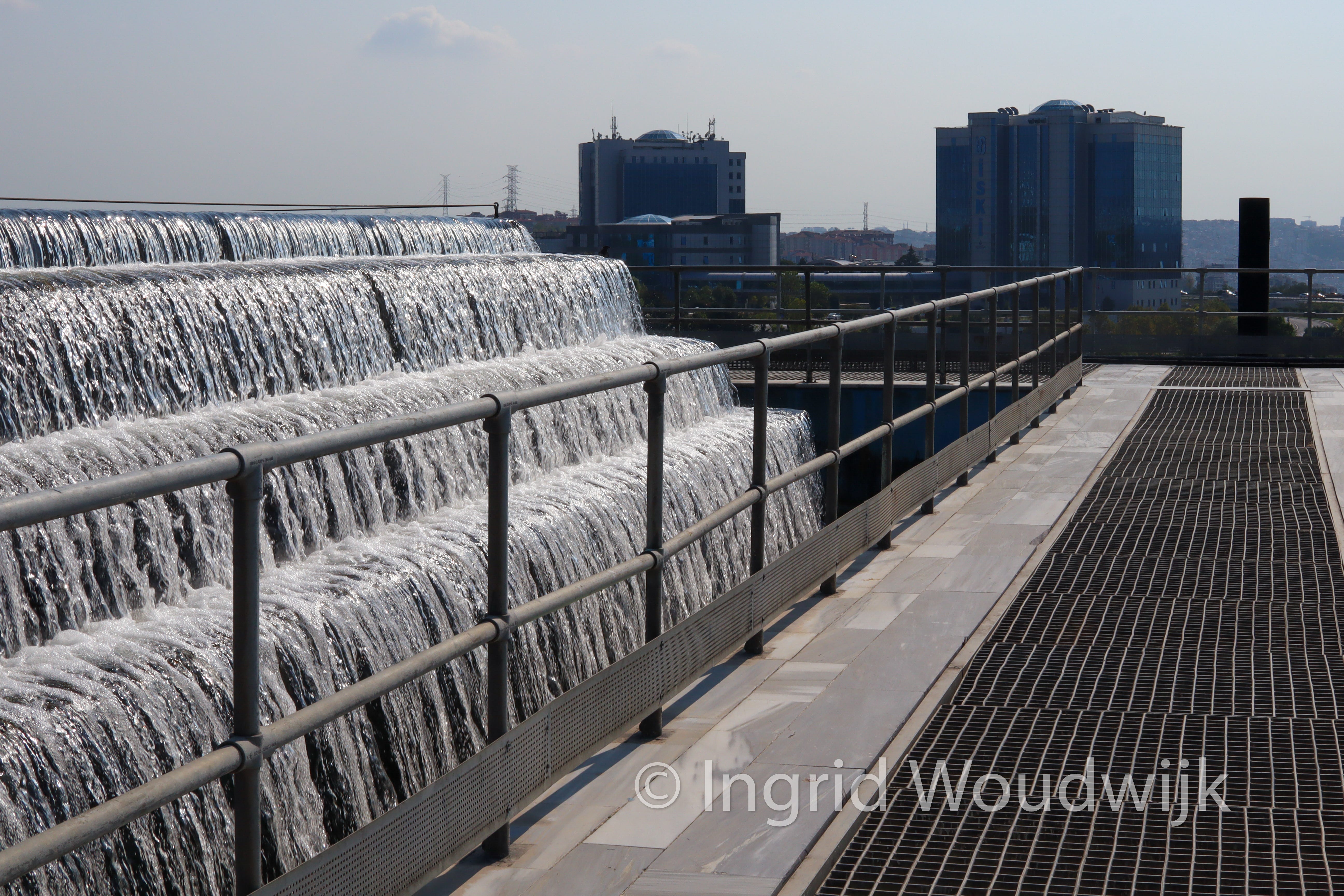 Fun fact: at İSKİ's Kağıthane treatment center they use fake bird sounds to chase off seagulls.
Fun fact: at İSKİ's Kağıthane treatment center they use fake bird sounds to chase off seagulls.
İstanbul's current water resources
The water supply for İstanbul residents is the responsibility of İSKİ (İstanbul Su ve Kanalizasyon İdaresi), an organization under the İstanbul Metropolitan Municipality. At the İSKİ headquarters, head of the Strategic Development Department Prof. Dr. Tuğba Ölmez Hancı works on what they call the İSKİ Master Plan.
The plan seeks "to make the water, wastewater and rainwater services currently provided within the provincial borders of İstanbul environmentally sustainable." It also aims to ensure İstanbul residents will have enough water in the future.
"Drinking water resources are one of the most important factors affected by the threat of climate change," she said.
Trained as an environmental engineer, and working as a professor at İstanbul Technical University, Ölmez Hancı showed Turkey recap part of the process that turns rain into drinking water.
İstanbul's water comes from 15 different reservoirs on the outskirts of the city and further away in other regions. In total, some 23,000 km of pipelines bring water collected in the reservoirs to treatment centers and then to homes and offices. Details and water statistics are very well documented on İSKİ's website, from current water levels in reservoirs to water quality reports.
Drinking water standards
Tap water in İstanbul adheres to standards set by the World Health Organization and the European Union and is perfectly drinkable, İlhan emphasizes. "I see it as a kind of political act to drink it," she said.
Regardless, motor scooters criss-cross the city daily to deliver 19-liter jugs of filtered water, called damacana, to homes and offices. İstanbul's tap water contains chlorine and not everyone wants to drink it, though İlhan said the taste of chlorine dissipates if the water sits in a pitcher for one or two hours.
"I trust the water from the tap. I have seen every step of the purification process with my own eyes," İlhan added.
Statistics from Su-Der, an umbrella organization for the countless mineral water companies, show they provided 131 liters of water per person in 2021. Given the recommended daily intake of two liters a day, we can estimate most city residents rely on tap water, especially during difficult economic times, as tap water is also much cheaper than ordering a damacana.
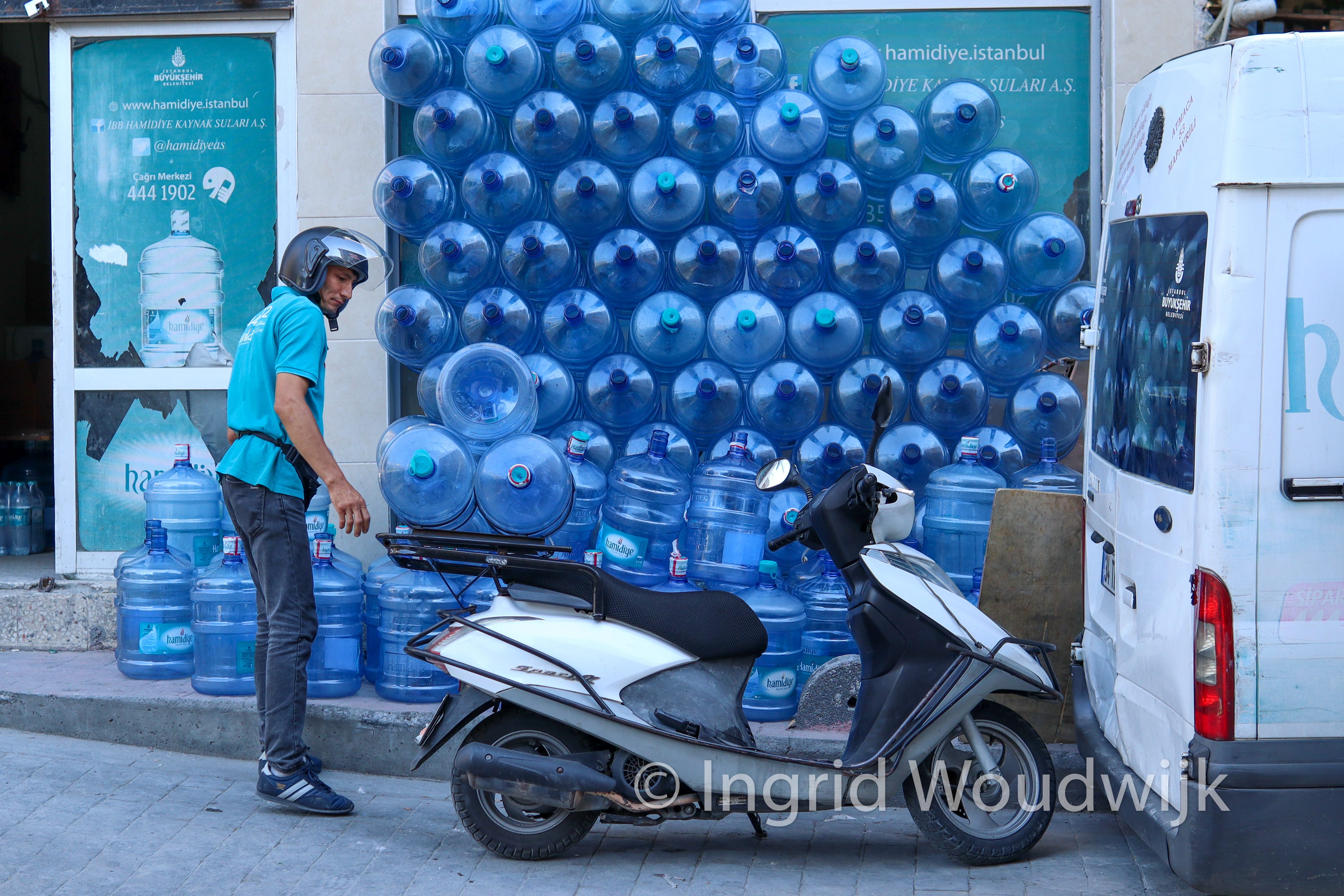 One of the countless bottled water shops in İstanbul.
One of the countless bottled water shops in İstanbul.
Sustainability be dammed
The dams feeding that tap water to İstanbul are located between Tekirdağ and Kırklareli on the European side and in Düzce on the Asian continent. Ölmez Hancı, who drank tap water flavored with fresh mint as we spoke, explained the different locations should be able to secure enough water in periods of drought, as well.
"One region might be rainy and another region may be dry" and water can be transferred between the different reservoirs, she said.
However, the reliance on dams is problematic, according to İlhan, who also hosts a radio show on Açık Radyo called Sudan Gelen (Coming from Water). "It is a problem that İstanbul has to get its water from two cities away," she said, referring to places like Düzce. "We transport the water 189 kilometers through pipes, which is not efficient."
Many cities in Türkiye depend on water from the dams and, in times of water scarcity, the tendency is to build more dams. She noted a drought can span over large areas affecting all the reservoirs at once.
"We cannot continue to build dams further and further away from cities. That is not a sustainable solution", she argued. Additionally, she said transporting water over long distances can negatively affect water levels in areas of origin.
The general issue with dams is they do not alter the quantity of water in an area, only store the available water. Or as İmamoğlu told the Guardian: "If it does not rain in Melen, you cannot get water from there either."
Instead of focusing on building new dams, İlhan argues that more circular water use policies should be implemented by the municipality, such as reusing rainwater and wastewater.
Last year, a plan was established that would require new buildings larger than 1,000 m2 to host underground water storage to collect rainwater, but the exact implementation of the policy remains unclear. "Local governments must be leaders in the use of rainwater. Just a law is not enough, you also have to apply the law", İlhan said.
In contrast, Ölmez Hancı questions the feasibility of rainwater harvesting in addressing water scarcity problems.
"Where would you be able to store rainwater in an apartment in Beyoğlu?" she asked. "It could be a good solution in Amsterdam, but not for İstanbul where people do not have gardens or large balconies."
She encouraged more research before taking decisions that would require rainwater collection or the treatment of grey water in houses. "Rainwater harvesting could be suitable for stadiums or factories, but for many houses in İstanbul it's not," Ölmez Hancı said.
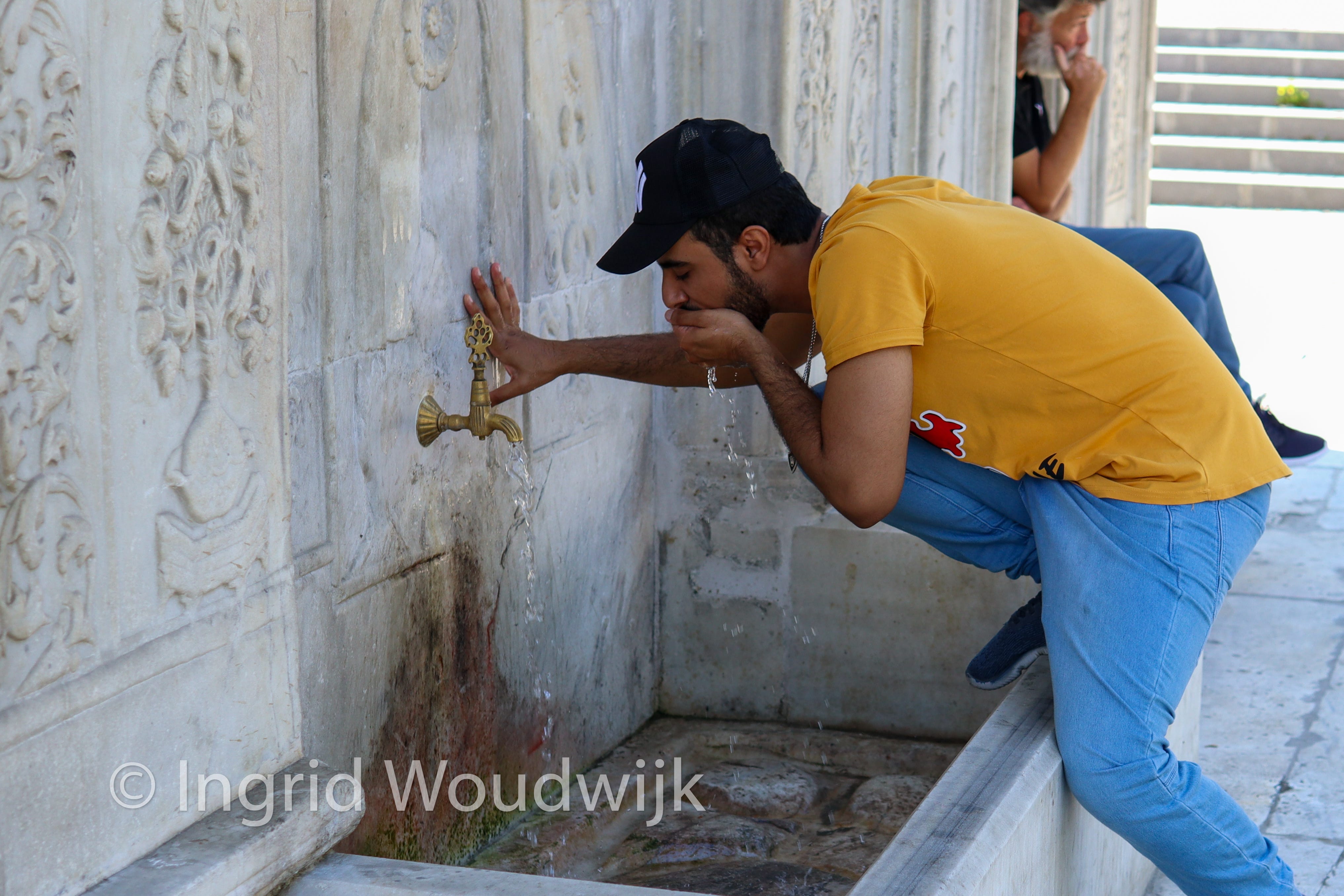 After contemplating whether or not the water was drinkable, this tourist decided to take a sip from an İstanbul fountain.
After contemplating whether or not the water was drinkable, this tourist decided to take a sip from an İstanbul fountain.
Role of the residents
While Ölmez Hancı focuses on the water supply side, some of her colleagues at İSKİ also see a role for İstanbul citizens in managing available resources.
In March, Raif Mermutlu, then-General Director of İSKİ, said: "No matter how much water is in our dams, we must change our water usage habits and make saving water a lifestyle."
İSKİ offers advice like washing your car with buckets of water instead of running water and shortening shower times.
While every liter of water saved is a net positive, experts say addressing the core of the problem requires larger scale policies that manage industrial and commercial water use along with personal home consumption. In the words of Ölmez Hancı: "For İstanbul, you have to think really big." (IW/VK)
This report was produced by Turkey recap with support from the Heinrich Böll Foundation in Turkey and the IPS Communication Foundation.
Click for all Turkey recap articles on bianet





